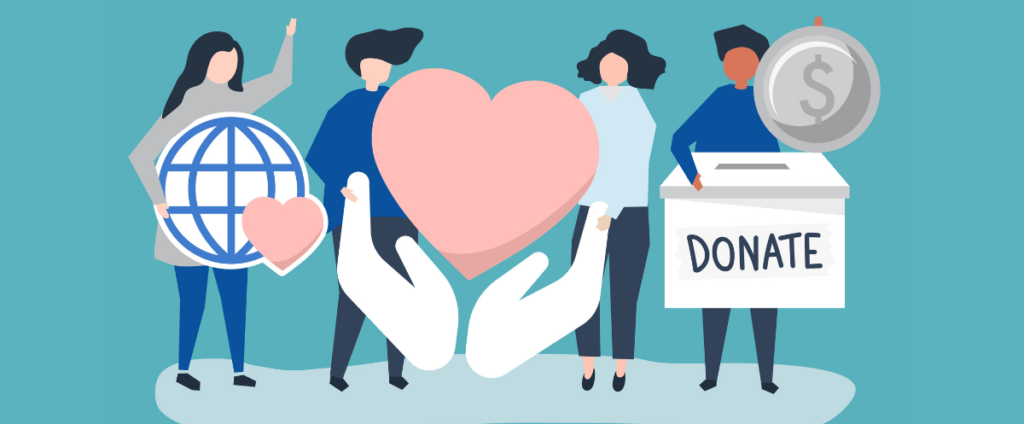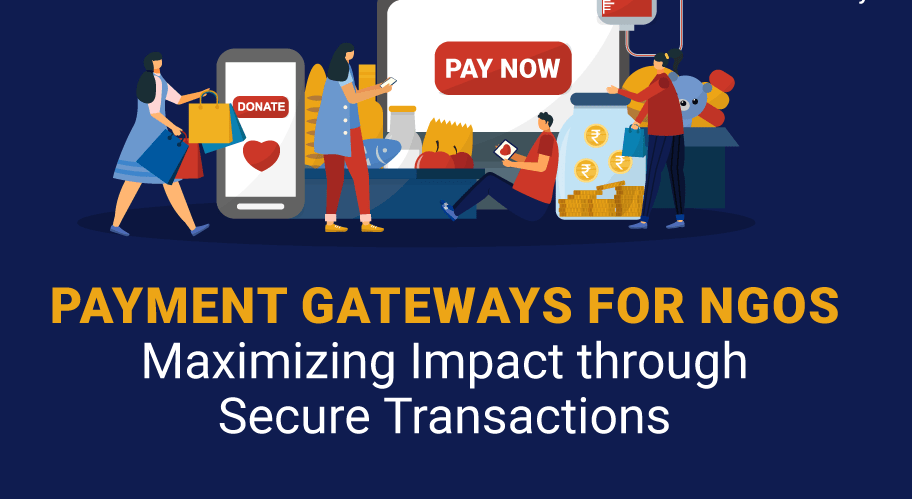AUTHOR :- MARIA SK
DATE:- 04/11/2023
Payment Gateway or NGO In the digital[1] age, the success of nonprofits, or Non-Governmental Organizations (NGOs), is significantly influenced by their ability to collect donations efficiently and transparently. Payment gateways have emerged as a powerful tool to support NGOs in their mission. This article will explore the symbiotic relationship between payment gateways and also NGOs, delving into the benefits, challenges[2], and best practices for leveraging these systems.
Understanding Payment Gateways
Payment gateways are online tools and services that allow organizations to accept payments, whether they are donations, purchases, or memberships, through various channels such as credit cards, bank transfers, or e-wallets[3]. These gateways facilitate secure and seamless financial transactions by encrypting sensitive data and processing payments in real-time.
Importance of PG for NGOs
For NGOs, the importance of PG cannot be overstated[4]. These organizations rely on a constant stream of donations to fund their activities, and also payment gateways provide a digital bridge between potential donors and the cause they support. This digital connection allows NGOs to tap into a global network[5] of supporters and simplifies the donation process, making it convenient for donors to contribute.

Benefits of Using PG for NGOs
1. Enhanced Donor Experience
Payment gateways offer an easy and secure way for donors to contribute, making the process convenient and hassle-free. This enhances the overall donor experience and encourages repeat donations.
2. Transparency and Accountability
Payment gateways enable NGOs to maintain transparency by providing donors with real-time transaction details. This transparency builds trust and also credibility.
3. Building Trust with Donors
When donors trust that their contributions are secure and will reach the intended recipients, they are more likely to support the NGO’s mission over the long term.
4. Maximizing Donations with Payment Gateways
Popular Payment Gateway Options
Several payment gateway options are available for NGOs, including PayPal, Stripe, and Authorize.Net. Each comes with its own features, pricing, and compatibility with different websites and platforms.
Setting Up a PG for Your NGO
The process of setting up a payment gateway for your NGO involves selecting a suitable provider, creating an account, and integrating the gateway with your website or donation platform. It’s essential to ensure that the chosen gateway aligns with your organization’s goals and needs.
Security Measures in Payment Gateways
Security is paramount when handling financial transactions. Payment gateways employ encryption, secure socket layers (SSL), and other security measures to safeguard donor information. Ensuring the safety of donor data is crucial for maintaining trust.
Transparency and Accountability
Transparency is one of the cornerstones of NGO work. Payment gateways make it easy to provide donors with receipts and transaction records, ensuring that their contributions are put to good use.
Building Trust with Donors
Building and maintaining trust with donors is essential for any NGO. Payment gateways contribute to this by offering secure, efficient, and transparent donation processes.
Maximizing Donations with Payment Gateways
PG allow NGOs to accept donations from a wide range of payment methods, including credit cards, bank transfers, and even cryptocurrencies. This flexibility broadens the donor base and increases the potential for financial support.

Challenges NGOs Face with PG
While PG offer numerous advantages, NGOs also encounter challenges, such as transaction fees, technical issues, and the need for ongoing maintenance and support.
Tips for Choosing the Right Payment Gateway
Selecting the right payment gateway involves considering factors like cost, integration, security features, and the gateway’s reputation. A thorough assessment of your organization’s needs will guide your choice.
Cost Considerations
The cost of using a payment gateway includes setup fees, transaction fees, and monthly fees. NGOs must factor these costs into their budgeting.
Case Studies of Successful NGOs Using Payment Gateways
To illustrate the effectiveness of PG for NGOs, this article presents case studies of nonprofits that have successfully implemented these systems, sharing their experiences and outcomes.

Conclusion
In conclusion, payment gateways have revolutionized the way NGOs collect and manage donations. By enhancing the donor experience, improving transparency, and building trust, payment gateways empower NGOs to make a more significant impact on their chosen causes. While challenges exist, careful selection and implementation can ensure that payment gateways are a valuable asset for nonprofits worldwide.
FAQs
1. How do payment gateways benefit NGOs?
Payment gateways enhance the donor experience, promote transparency, build trust with donors, and maximize donations for NGOs.
2. What are some popular payment gateway options for nonprofits?
Popular payment gateway options for NGOs include PayPal, Stripe, and Authorize.Net, among others.
3. How can NGOs ensure the security of donor information when using payment gateways?
Payment gateways employ encryption, secure socket layers (SSL), and other security measures to protect donor information and maintain trust.
4. What challenges do NGOs face with payment gateways?
NGOs may encounter challenges such as transaction fees, technical issues, and ongoing maintenance and support requirements when using payment gateways.
5. What factors should NGOs consider when choosing the right payment gateway?
NGOs should consider factors like cost, integration, security features, and the gateway’s reputation when selecting the right payment gateway for their organization.





